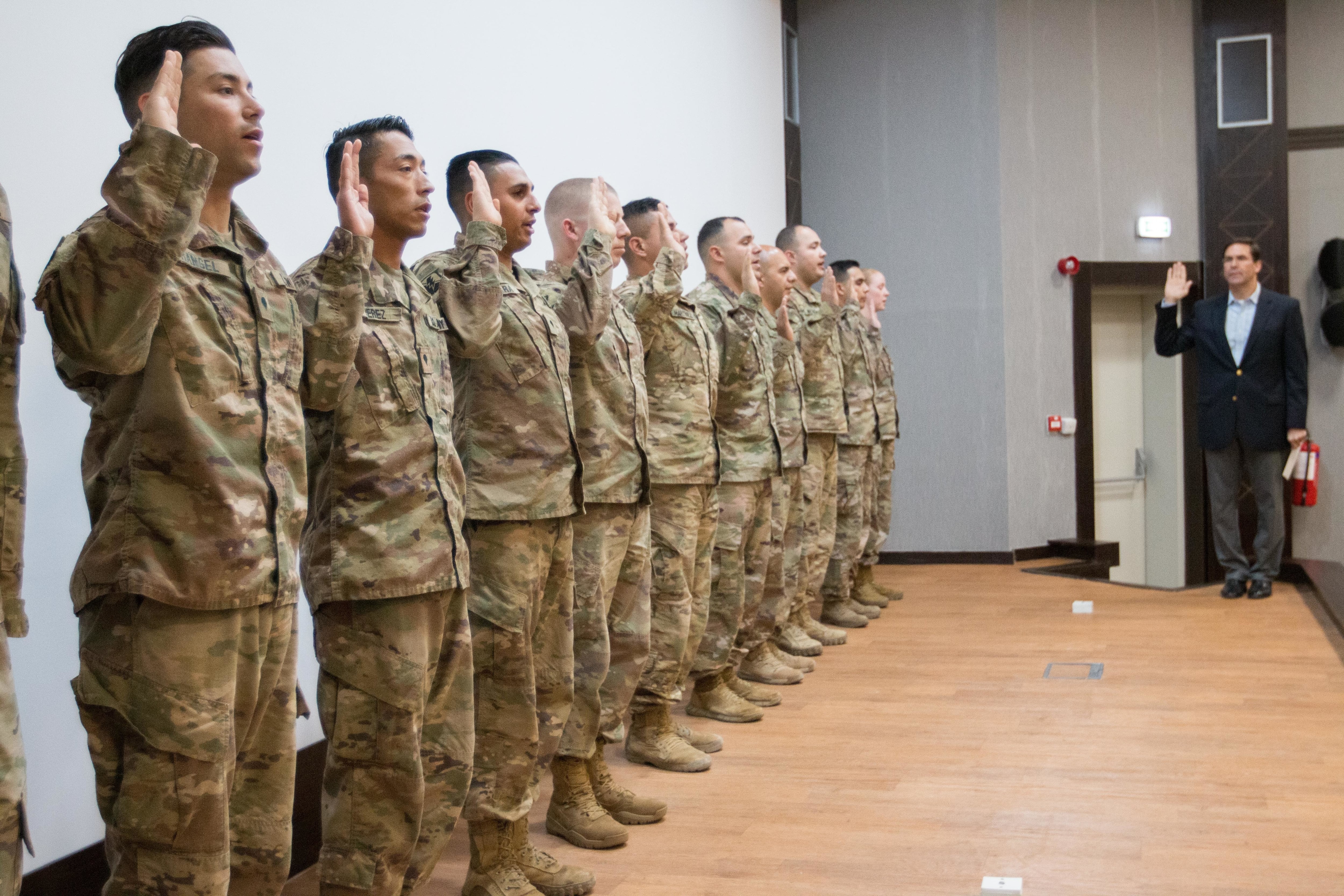The combination of both a reduction in total service end strength goals from last year to now, along with an injection of recruiters last year may have helped the Army National Guard and Army Reserve get back on track filling their ranks.
In a Senate Appropriations Committee hearing on the Guard and Reserve budgets this week, Sen. Dick Durbin, D-Ill., asked top leaders for those services what had been the problem in recruiting and retaining soldiers on the reserve side.
Last October, near the end of the fiscal year, the Guard and Reserve were seeing fewer active-duty soldiers go to the reserves, mainly because active-duty retention rates were at historic highs.
The regular Army hit its retention goals in April 2018, five months ahead of its October deadline. Army Secretary Mark Esper said that retention had hit 86 percent, a historic high. The more typical figure rides around 81 percent.
RELATED

Retention in the Guard and Reserve was mirroring much of what the active side saw, with the service exceeding their retention goals by more than 100 percent.
But that wasn’t taking up the slack created by fewer active going Reserve, officials said at the time.
An estimated 10 percent or more of new Guard and Reserve soldiers come from the active-duty ranks.
The current goals are for an end strength of 335,500 for the Guard and 189,250 for the Reserve.
The Army had set a goal of adding 4,000 additional soldiers each year until 2024 but has since scaled that back to 2,000 per year.
On Wednesday, Air Force Gen. Joseph L. Lengyel, chief of the National Guard Bureau, told senators that additional funding last year added slots for 440 full time recruiters, which has helped the reserve side for all four services better stay on track to meet their end strength goals.
Army Lt. Gen. Charles D. Luckey, chief of the Army Reserve, said his group would meet their goals this year.
He noted that there were more than 700 enlistments in March alone and that the Army Reserve has its lowest attrition rates in 18 years.
Some of the gaps, though, he admitted, were from tightening up the ranks.
“In a vigorous push for readiness we’ve reduced the number of non-deployable and readied the force for major contingency operations,” Luckey said.
Because they have “insisted” on medical and deployability readiness, there has been some attrition.
Also, the Pentagon last month released its five-year plan for end strength goals.
The new goals are lower than what had been advocated for in last year’s budget sessions.
The proposed end strength for the total Army by 2023 was 1,040,000 last year.
This year, the Army is planning for 1,016,500.
That reduces the burden for recruiters and career planners by 23,500 for the total force. An exact breakdown of active, Guard and Reserve was not immediately available.
Sergeant Major of the Army Dan Dailey testified to Congress in February that the Army had made 90 percent of its retention goals for the fiscal year already.
The active side was at 98 percent of its reenlistment goals, the Reserve at 94 percent and the Guard at 62 percent at that time.
Todd South has written about crime, courts, government and the military for multiple publications since 2004 and was named a 2014 Pulitzer finalist for a co-written project on witness intimidation. Todd is a Marine veteran of the Iraq War.





